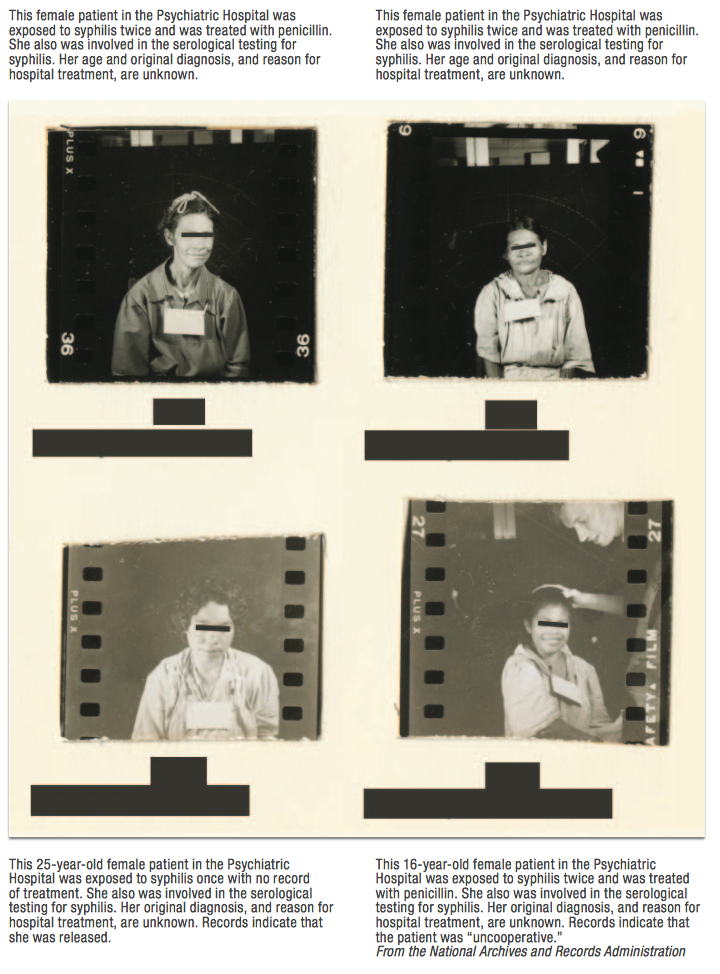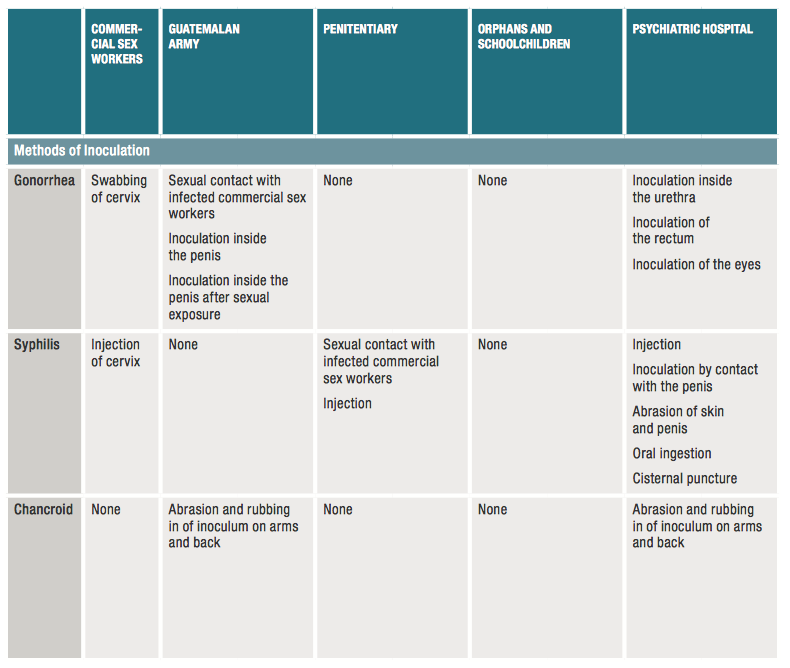Now that coverage of the Ebola outbreak in Africa has basically disappeared from the world's media and, with revelations that pharmaceutical companies were expediting the development of an anti-Ebola vaccine, I recalled a time in American history where there was a relatively urgent need to develop a treatment for a disease that that had no real cure at the time. Here is the story of how the American government justified using human testing to develop a cure for a disease and which country was selected for this honour.
Between 1946 and 1948, the United States government through the National Institutes of Health and under the guidance of Dr. John C. Cutler undertook at study that was looking for new ways to prevent sexually transmitted diseases (STDs) including syphilis, gonorrhoea and chancroid. As background, in 1947, it was believed that an experiment with rabbits that intentionally exposed them to syphilis followed by an injection of penicillin within a few days could prove be a panacea to preventing the spread of the disease, if only the experiment could be undertaken on humans. Prior to the 1940s, the treatment for syphilis was to have men urinate, wash with soap and water and then receive an injection of silver proteinate into their penises followed by rubbing calomel ointment over their penis and pubic regions to control and prevent syphilis. This methodology was not terribly effective. Other methods included the use of salvarsan, an arsenic-based compound which proved to be complicated and sometimes toxic. By 1938, sulfanilamide became the drug of choice for reliably curing gonorrhoea. Unfortunately, it was still expected that there would be 350,000 new cases of gonorrhoea in the Armed Forces during the Second World War which would result in 7,000,000 lost man days per year and a cost of treatment equivalent to $440 million today.
In order to test the effectiveness of penicillin over a shortened timeframe, it was necessary to use human test subjects. It is under this background that Dr. Cutler's Guatemala experiment took place. In the first phase of this experiment, female commercial sex workers in Guatemala (commercial sex was legal in Guatemala at the time) were infected with gonorrhoea or syphilis and then allowed to have unprotected sex with prisoners, mental hospital patients and soldiers. This phase of the experiment was unsuccessful since few of the men involved became infected. In the next phase, a total of 1308 research subjects were intentionally exposed to the three STDS. These included soldiers, prisoners and mental hospital patients, four of whom are shown on this screen capture:
The subjects were directed inoculated with the agents; gonorrhoea was directly injected into the urethra using a toothpick swab inserted 1/2 inch into the urethra, chancroid was injected into the skin and syphilis was introduced by skin injection and by exposing the foreskin of the penis to the infectious agent. In seven cases, women were exposed to syphilis through the injection of the bacteria directly into the spinal fluid through a cisternal puncture. Scientists also wanted to better understand whether syphilis could penetrate the mucous membranes of the digestive system; in these cases, subjects swallowed a mixture of testicular tissue, fluid containing syphilis and distilled water. In each case, the subjects were not informed of the purpose of the study and did not consent to being part of a study. Here is a table summarizing the methods used to introduce STDs to the subjects involved in the study:
Records show that 678 subjects that contracted gonorrhoea and chancroid received treatment, however, research suggests that some of the subjects infected with syphilis were prescribed either no treatment or partial treatment. The records do not reflect whether or not the infected commercial sex workers were treated.
In addition to the 1308 research subjects, 5128 subjects including soldiers, prison inmates, psychiatric patients (a total of 642 patients), children (a total of 1384 between the ages of 1 and 18 years from both orphanages and the highland area of Guatemala), leprosy patients and American Air Force personnel located at the U.S. base in Guatemala were the targets of diagnostic testing which included blood tests and lumbar punctures to improve the tools available to accurately diagnose antibodies that indicated exposure to syphilis. These continued until 1953.
In all, between February 1947 and October 1948, Dr. Cutler undertook 32 gonorrhoea experiments, 17 syphilis experiments and one chancroid experiment as shown on this table:
During the course of the experiments, 83 subjects died, however, the relationship between the experiment and the deaths is unclear. Dr. Cutler attributed the "steady loss of patients by death" to tuberculosis.
According to the U.S. Department of Health and Human Services (HHS), the following ethical breaches took place:
1.) The use of subjects who were part of a highly vulnerable population.
2.) Research took place without valid and informed consent of the subjects involved.
3.) Deception was used by those who conducted the study.
The Guatemala travesty was discovered during research on the Tuskegee Study of Untreated Syphilis by Professor Susan Reverby, a 1943 – 1944 study that left nearly 400 African American males in Alabama with syphilis untreated for nearly 30 years with the United States government observed the progress of their infections.
The HHS claims that:
"Such abuses could not occcur today in research funded or conducted by the U.S. government. A series of safeguards established over the past 40 years provide protection for human participants, whether in the United States or overseas, in medical research from these types of abuses."
That said, here is a critical paragraph from the "Ethically Impossible" report released by the Presidential Commission for the Study of Bioethical Issues in 2011:
"While research is sometimes still done with vulnerable populations, using deliberate exposure and infection, and without informed consent, such studies have to be carefully justified, reviewed, and approved often with additional protections added."
You can publish this article on your website as long as you provide a link back to this page.




Be the first to comment